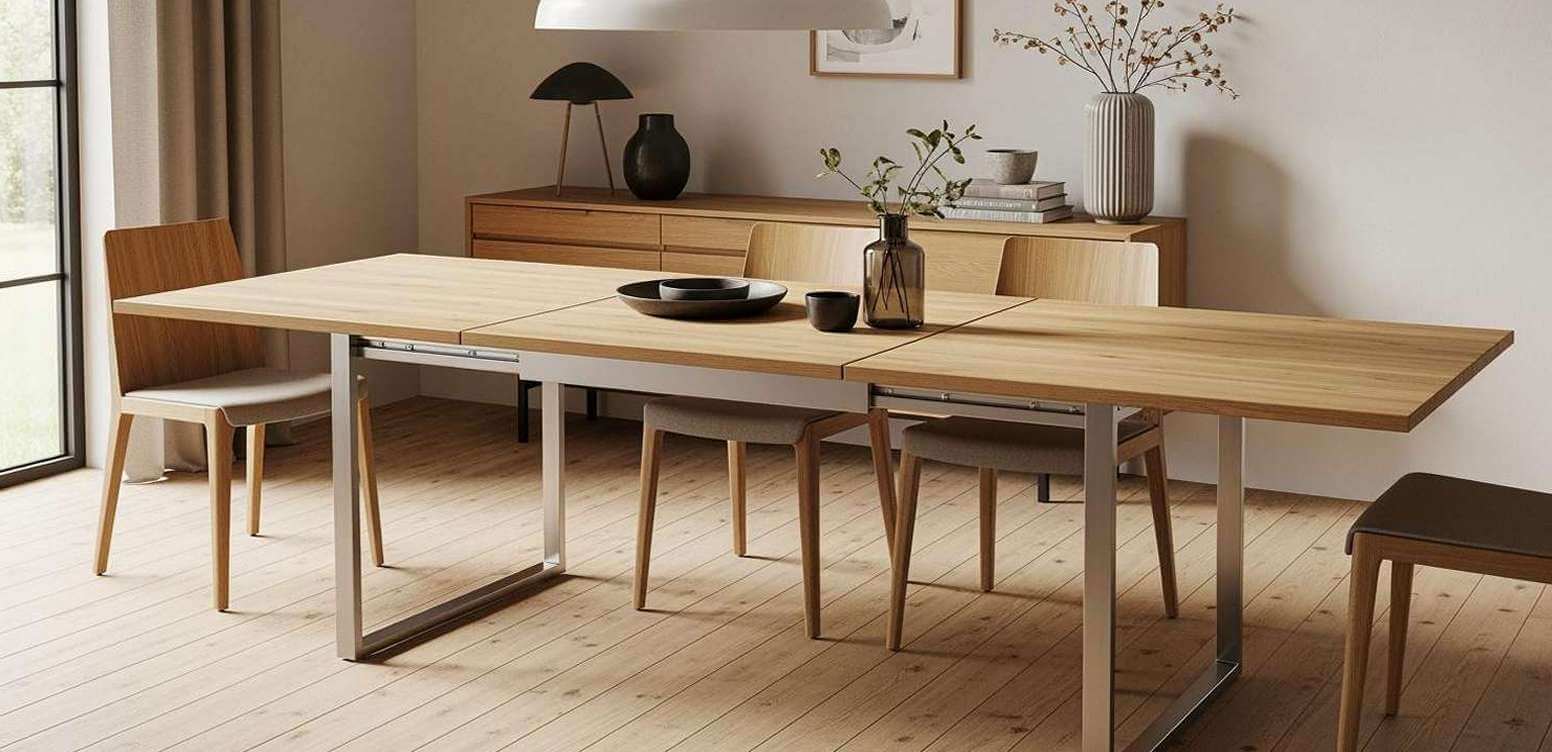Choosing where to buy furniture has become more complex than ever before. The rise of e-commerce has transformed how we shop for everything from sofas to dining tables, creating a genuine dilemma between digital convenience and traditional retail experiences.
Online furniture shopping offers unmatched convenience and often better prices, allowing you to browse thousands of options from your couch at any hour. You can easily compare prices across multiple retailers, read customer reviews, and access brands that might not have physical stores in your area.
Local furniture stores provide something digital shopping cannot replicate – the ability to physically test comfort, examine build quality, and see true colors and textures. Local retailers often employ knowledgeable staff who can provide personalized recommendations and design advice. Supporting local businesses strengthens your community’s economy and often means faster delivery times and easier returns.
The decision ultimately depends on your priorities, budget, and comfort level with each shopping method.
Read more about – finding the perfect furniture for your home
The convenience factor of online furniture shopping
Online furniture shopping has revolutionized how people furnish their homes, offering unprecedented convenience that traditional stores simply cannot match. You can browse extensive catalogs at 3 AM in your pajamas, compare dozens of similar items side by side, and make purchases without dealing with pushy salespeople or crowded showrooms. The selection available online dwarfs what most local stores can offer.
If you are into a certain style like Italien or Danish design, then it can be hard to find those types of furniture online. Here is much easier to, for instance, find a shop that specialized in Danish design and furniture online.
Major e-commerce platforms showcase thousands of pieces from hundreds of brands, giving you access to styles and price points that would require visiting multiple physical locations to find. This vast selection means you’re more likely to find exactly what you’re looking for, whether it’s a specific shade of blue for your accent chair or a dining table that fits your unusual space dimensions. Price comparison becomes effortless when shopping online.
Within minutes, you can check prices across multiple retailers, read honest customer reviews, and even use browser extensions that automatically find coupon codes or alert you to better deals elsewhere. Many online retailers also offer exclusive web-only discounts and flash sales that can result in significant savings.
However, the convenience comes with trade-offs. Delivery times can be lengthy, especially for custom or oversized pieces. Returns can be complicated and expensive, particularly for large items. You also miss the immediate gratification of taking your purchase home the same day, which local shopping provides.

Why local furniture stores still matter
Local furniture stores provide tangible benefits that online shopping simply cannot replicate, starting with the ability to physically interact with your potential purchases. You can sit on that sofa to test its firmness, run your hands across fabric textures, and see how colors look under different lighting conditions. This hands-on experience eliminates the guesswork that often leads to disappointment with online purchases. The expertise of local sales staff represents another significant advantage.
These professionals understand their products intimately and can guide you toward pieces that match your specific needs, lifestyle, and space constraints. They often have years of experience helping customers navigate common furniture challenges and can spot potential issues you might overlook when shopping independently online. Local stores frequently offer services that enhance your buying experience beyond the initial purchase.
Many provide free or low-cost delivery within their service area, often with white-glove service that includes setup and packaging removal. Some local retailers also offer interior design consultations, helping you create cohesive room layouts rather than just selling individual pieces.
The ability to support your local economy adds another dimension to the local shopping experience. Money spent at local businesses tends to circulate within the community, supporting local jobs and contributing to the area’s economic health. Additionally, local stores often participate in community events and charitable activities, creating connections that extend beyond simple commercial transactions. Building relationships with local furniture retailers can pay dividends over time, as they may offer loyal customers early access to sales, special ordering options, or priority service for repairs and warranty issues. Especially large pieces of furniture such as a huge sofa or a wooden plank table can be rather problematic to ship and transport when buying online.
Comparing costs and value between shopping methods
Price differences between online and local furniture shopping vary significantly depending on what you’re buying and how you evaluate total costs. Online retailers often display lower sticker prices due to reduced overhead costs, but the complete picture becomes more complex when you factor in shipping fees, assembly requirements, and potential return costs.
Several key factors influence the true cost comparison:
• Shipping costs can add hundreds of dollars to large furniture purchases, especially for items requiring special handling
• Assembly fees may apply if you’re not comfortable with DIY setup, potentially adding $50-200 per piece
• Return shipping for unwanted items often costs more than the original delivery fee
• Local stores frequently include delivery and basic setup in their pricing
• Warranty service through local retailers typically involves no additional shipping costs
• Sales tax applies to both options, though some online purchases previously avoided this
Local stores sometimes match online prices when presented with competitor pricing, effectively eliminating the price advantage of digital shopping. They may also offer package deals when you purchase multiple pieces, something that’s harder to negotiate online. The value equation extends beyond pure pricing.
Local purchases often come with immediate availability, allowing you to take smaller items home the same day. You also avoid the risk of damage during long-distance shipping, which can delay your decorating plans by weeks while replacements are processed. Consider your time as part of the cost calculation, as online shopping requires more research time to compensate for the inability to physically examine products.

Making the right choice for your situation
Your personal circumstances should drive the decision between online and local furniture shopping, as no single approach works best for everyone. Budget-conscious shoppers with flexible timelines often benefit most from online shopping, where patient browsing can uncover significant deals and access to clearance items from multiple retailers. Time constraints play a major role in this decision.
Busy professionals who struggle to visit stores during regular business hours find online shopping invaluable, while those who enjoy weekend browsing and have flexible schedules may prefer the social aspect of local shopping. Your comfort level with risk also matters significantly. Some people feel anxious about spending hundreds or thousands of dollars on items they haven’t touched, while others trust detailed product descriptions and customer reviews.
Consider your past experiences with online purchases and how often you’ve been satisfied with items that looked different than expected. The type of furniture you’re buying influences the best shopping method. Simple items like basic bookshelves or side tables translate well to online shopping, while complex purchases like mattresses or ergonomic office chairs benefit from hands-on testing.
Expensive statement pieces warrant the extra effort of local shopping to ensure they meet your expectations. Your living situation affects practical considerations too. Apartment dwellers without elevators or those with narrow staircases may prefer local retailers who can assess delivery challenges beforehand. Homeowners with flexible delivery schedules have more options with online purchases. Consider combining both approaches when furnishing larger spaces, using online shopping for basic pieces and local stores for key items where comfort and quality matter most.

The choice between online and local furniture shopping doesn’t have to be an either-or decision. Each method offers distinct advantages that suit different needs, budgets, and shopping preferences. Online shopping excels when you prioritize convenience, extensive selection, and competitive pricing, making it perfect for straightforward purchases and budget-conscious buyers with time to research.
Local shopping shines when you need to evaluate comfort, quality, and appearance firsthand, particularly for expensive or complex items like sofas, mattresses, or dining sets. The personal service, immediate availability, and community support aspects of local retailers provide value that extends beyond the purchase itself.
Smart furniture shoppers often blend both approaches strategically. Research options online to understand market prices and read reviews, then visit local stores to examine promising pieces in person. Alternatively, test similar items locally to understand your preferences, then search online for the best deals on your chosen style.
Your decision should align with your specific situation – your budget, timeline, comfort with online purchasing, and the type of furniture you need. Consider the total cost including delivery and assembly, not just the sticker price. Choose the method that gives you confidence in your purchase and fits your lifestyle, as the best furniture buying experience is one that leaves you satisfied with both the process and the result.
Andrea Bianchi is a passionate interior designer and renowned blogger who seamlessly blends creativity with functionality to create beautiful, harmonious spaces. With a background in design and a love for aesthetics, Andrea has built a reputation for her unique ability to transform ordinary interiors into extraordinary living environments. Her blog serves as a platform where she shares her insights, tips, and inspirations, offering readers a glimpse into the latest trends in interior design. Whether she’s working on a high-end residential project or crafting content for her blog, Andrea’s work reflects her commitment to elegance, comfort, and timeless design.



